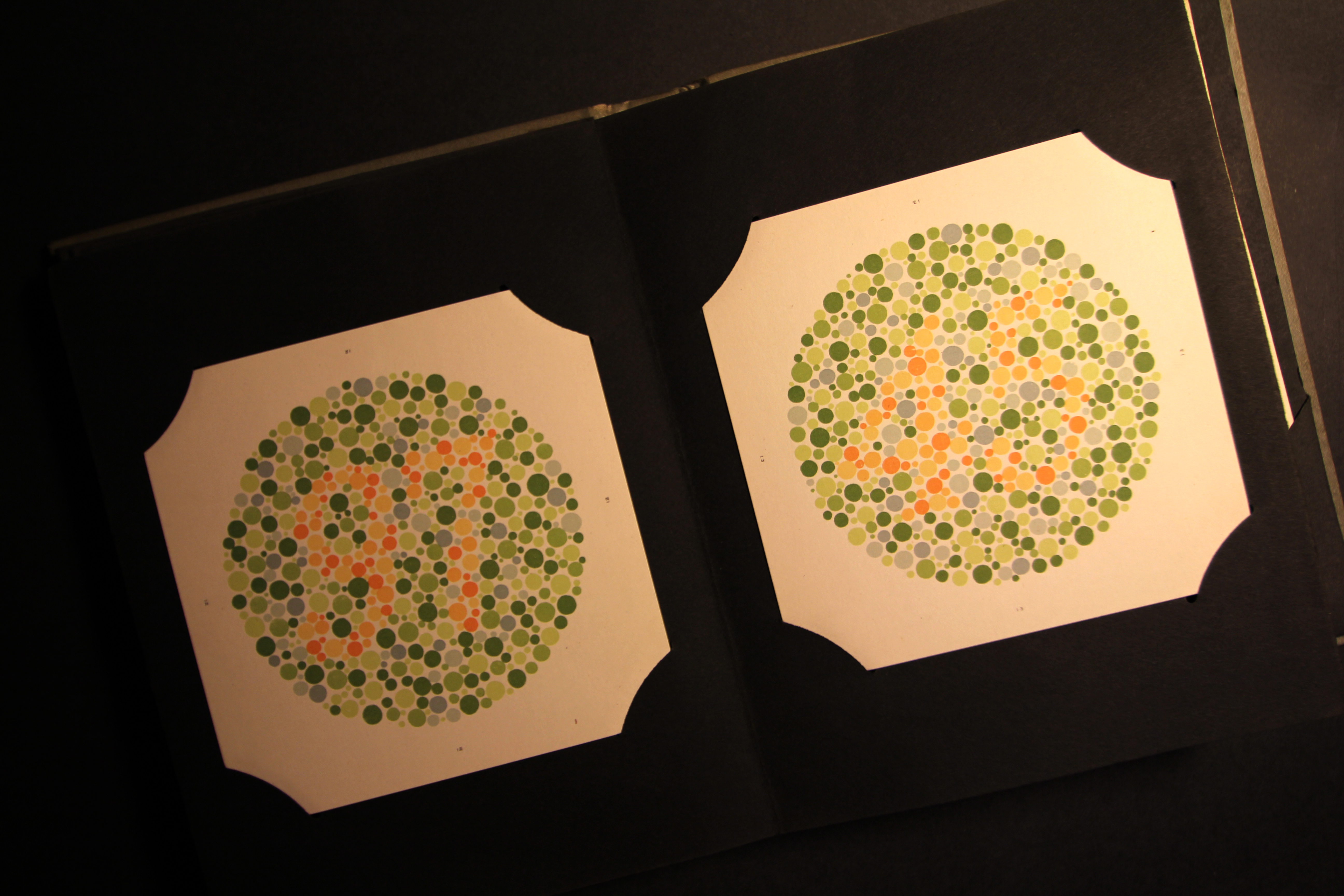While considering how colour contributes to an image it may be useful to consider what we see as individuals.
Colour vision deficiency or "colour blindness" affects one in twelve males and one in one hundred females (NHS statistics). I was reasonably confident that my colour vision is reasonable, having been tested in the past for occupational screening and airfield driving licence assessments, but I thought it would be fun to check anyway.
An introduction to the subject may be found here :
http://www.nhs.uk/conditions/Colour-vision-deficiency/Pages/Introduction.aspx
I dusted off my 1944 copy of Tests for Colour-Blindness, originally designed by Dr. Shinobu Ishihara. This work has been a standard assessment tool since it was devised in 1917, and is still employed today.
The tests consist of a series of plates composed of coloured dots which contain numerals the visibility of which varies according to an individuals colour perception.
In the example here the number 97 may be seen in the left plate; number 45 in the right.
Above we see 16 to the left, with 73 to the right.
Being now satisfied that my colour vision is adequate, I shall proceed with what I'm supposed to be doing.
All the plates of the Ishihara tests may be found here (text is in French, but it is very easy to interpret the results) :
http://daltonien.free.fr/daltonien/article.php3?id_article=6




No comments:
Post a Comment